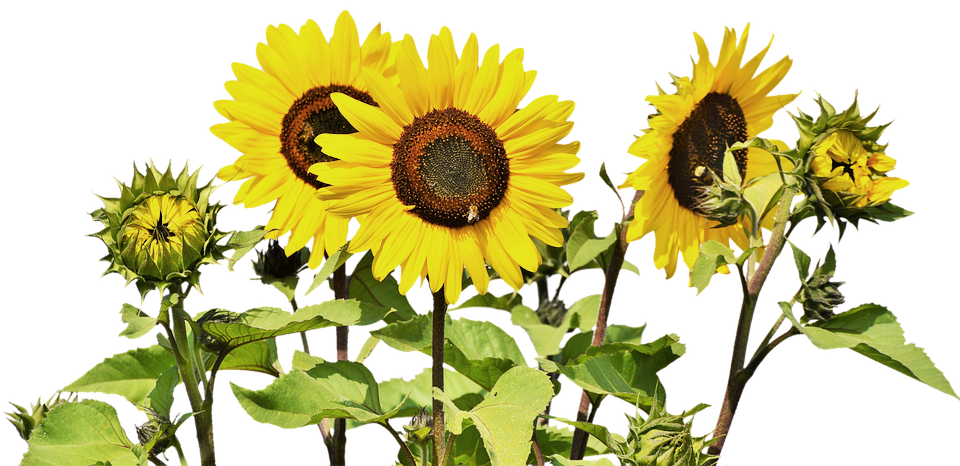
Anyone Can Grow Herbs!
By Chris Edmunds
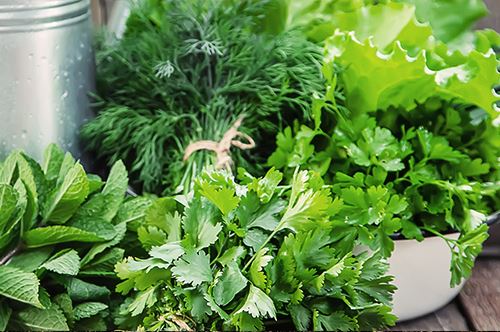
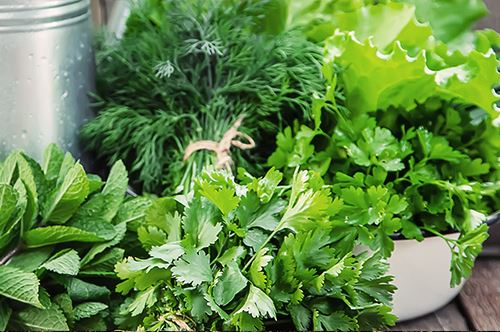 There is tons of enthusiasm for growing herbs lately, and we love it! But, we also hear stories from people whose excitement about herb gardening was squashed when they couldn't keep their herbs alive. 'Easy' is a popular word in many articles about herb gardening, and that's a bit misleading. You can't just plant an herb and leave it in a corner for a few months, like a ZZ plant. Herbs need a bit more of your attention.
There is tons of enthusiasm for growing herbs lately, and we love it! But, we also hear stories from people whose excitement about herb gardening was squashed when they couldn't keep their herbs alive. 'Easy' is a popular word in many articles about herb gardening, and that's a bit misleading. You can't just plant an herb and leave it in a corner for a few months, like a ZZ plant. Herbs need a bit more of your attention.
With that said, herbs are nothing to be afraid of. Anyone can grow herbs, even a beginner gardener. Here's a list of versatile herbs that will grow indoors or out. We've split them up into categories based on how challenging they are to grow.
An important thing to keep in mind when choosing herbs is to replicate their natural environment, whether you plan to plant your herbs in pots or in the ground. Before we get into the specific herbs, here are 3 essential care tips:
- They all need drainage, so plant them in soil that drains well.
- They all need sunshine, upwards of 6 hours a day. Placing them near a south-facing window is best. You may need a grow light in winter.
- They need a little heat. The herbs we love to grow at home are mainly Mediterranean, so they love the hot sun. Keep their location warm—between 65 ̊F and 75 ̊F.
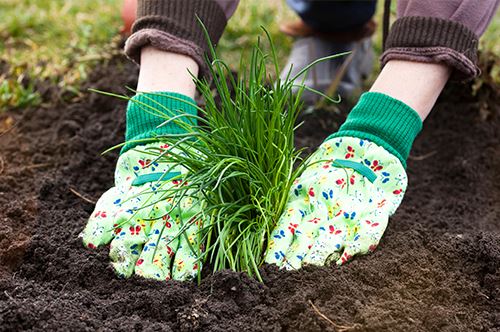 Easy Care Herbs
Easy Care Herbs
Chives are definitely one of the easiest herbs to grow. They come back year after year and spread in the garden. They have edible flowers, and they add a lovely kick to your food. Chives will also grow happily in a pot with good drainage, and you can start them quickly from seed. You can cut chives right down to an inch above the soil, and they'll send up new shoots.
Indoors, keep them near a sunny window. Chives like to dry out slightly between watering. If you want chives all year long, keep 3 or 4 small pots of them, so you can harvest them in cycles and give each pot some rest time to regrow.
Mint is also an easy herb to grow in indoor pots or your outdoor containers. In your garden beds, it may spread like crazy and take over. It will be happy in a pot with good drainage. It likes to dry a bit between watering as well, but keep an eye on the leaves. If they start to look a little crispy, your mint needs water. The best part about mint is that it will bounce back from drying out within a day, and sometimes just a few hours.
Mint can get lanky, so keep pinching it back as it grows. If you see flowers, pinch them off. You can cut mint back a lot without damaging the plant, so if you need to make mojitos for the whole neighborhood, it will keep putting out new growth.
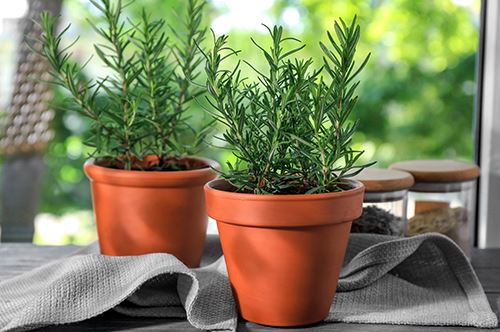 Moderate Care Herbs
Moderate Care Herbs
Rosemary is ideal for a rock garden outdoors, or a well-draining pot. Rosemary is a perennial, so if you keep it in a pot, you can bring it indoors over the winter. Rosemary does not like wet feet. It needs regular pruning to prevent it from growing lanky. You can harvest up to 1/3 of the plant at once, but it will need a fair bit of time to regrow before you take more. Rosemary does not like cold drafts, and it needs lots of light and heat.
Basil can be finicky. Indoors, basil plants need at least 6 hours of warmth and sun and excellent drainage. When watering basil in pots, discard any excess water after an hour, so its roots don't sit in a puddle. Outdoor basil also needs protection from wind and cold.
Harvest basil when there are 6-8 leaves on a stem. Cut that stem right back to just above the first set of leaves. Similar to mint, basil will grow bushier and thicker if harvested regularly. If you see flowers, clip them off as soon as you can.
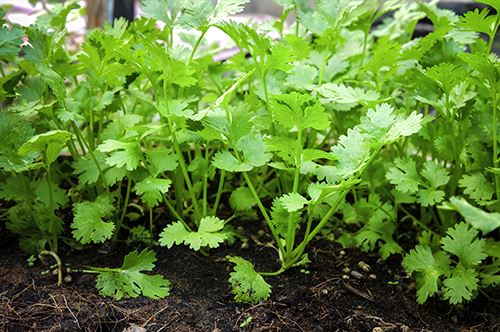 Challenging Care Herbs
Challenging Care Herbs
Cilantro: Everyone either loves it or hates it, but either way, it's challenging to keep cilantro from bolting, or flowering prematurely. The thing with cilantro is that you can't just cut it back hard and wait for it to come back again. Once it has bolted, that plant is toast. If you're committed to growing cilantro, you'll need to stay on top of harvesting it every day or two to keep it producing new edible leaves.
Cilantro needs full sun, but when it gets hot out, it'll immediately start bolting. If you want fresh cilantro all season, you'll need to start new seeds every 2-3 weeks. It needs plenty of moisture and should be pinched back when it's young to encourage a bushier plant. You can harvest cilantro as soon as it starts developing leaves. Cilantro does not retain its fresh flavor when dried.
Dill is a large plant and needs lots of space. Dill grows well from seed, but like cilantro, you'll need to stagger seedings every two weeks. It also bolts very quickly, and it takes up a ton of garden space. If it's transplanted from starter pots, it's likely to bolt right away. It wants fertilizer regularly, and it may develop mildew if watered from overhead.
You can harvest dill once it's about 6 inches tall. Dill also loses most of its flavor when dried. Dill seed heads make really interesting additions to floral bouquets.
The most important thing to remember about herb gardening, whether in your kitchen, on the patio, or in your garden, is to do your research. If you can replicate the herb's natural environment, it will probably produce very well for you. Now that we have garden tools, like moisture sensors and calendar reminders on our phones, there are plenty of clever tricks you can use to set your herbs up for success.

